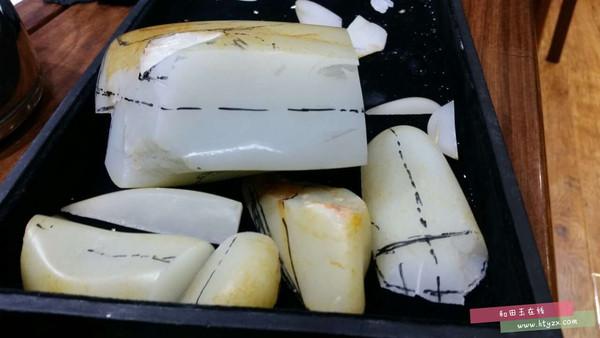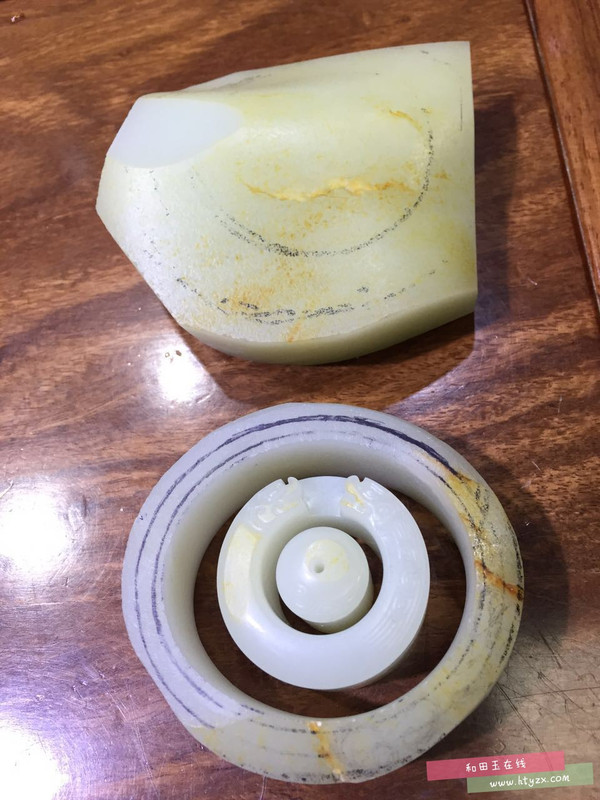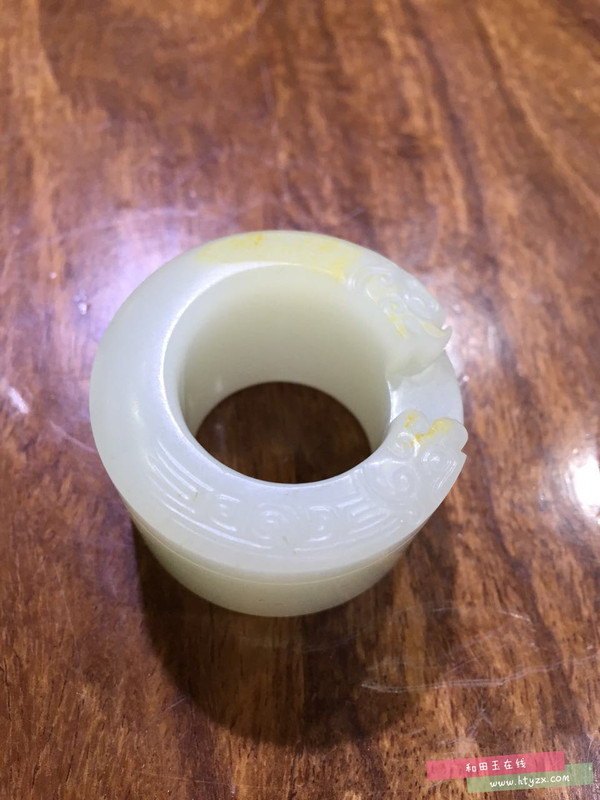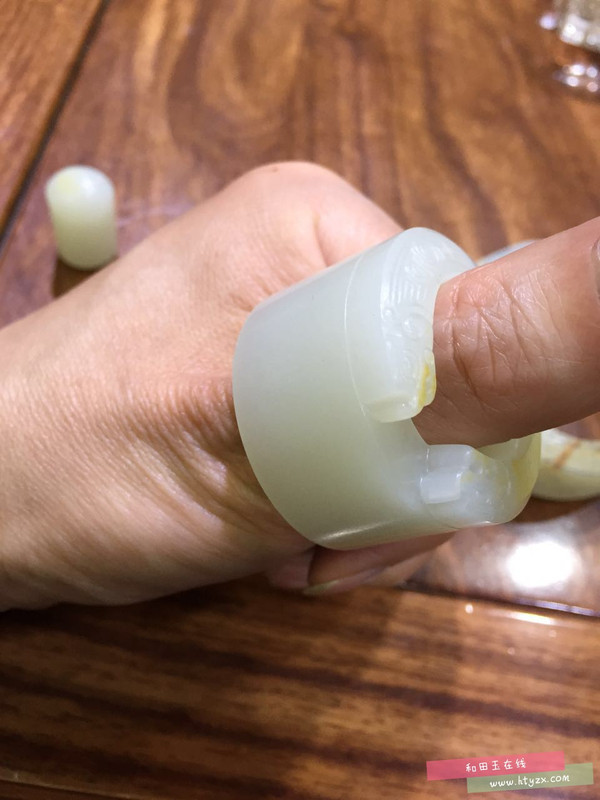Abstract The shape or style of jade products are processed. Jade processing, although there may be many different processing details. But overall it is nothing more than three big steps of sawing, honing and polishing. Hetian jade took everyone to see the production of the next Hetian jade. 1. jade...

1. Jade sawing Saw cutting is to divide the jade material into appropriate shapes and sizes on the sawing machine for the jade craftsmen to make reasonable use of. This is also the first process of jade processing.
The sawing process involves a saw and a saw blade. The tools used for sawing have changed a lot since ancient times. From the manpower-driven mud sand saw to the electric drive cutting, this period has gone through a long period of time. Modern sawing machines that are used in large quantities have various electric key machines for different purposes, such as large material cutting machines (including stone cutters, slicers), small cutting machines, multi-knife cutting machines, and the like.
The types of saw blades are also different. The saw blades of modern sawing machines use hot-cast saw blades and rolled-plated saw blades. The special diamond powder is directly hot-cast or pressed on the blade edge of the saw blade, so that the saw machine can quickly cool any water. The jade of hardness is cut and the efficiency is high. In particular, rolling a plated key piece is widely used because of its low price, full specifications, thin knife edge, and minimal loss of material during cutting.

The honing process involves abrasives and abrasives. Abrasives are important excipients for jade processing. Ancient craftsmen used sand in the riverbed to make abrasives. The honing of jade is carried out by grinding with abrasives. There are usually two forms; honing with loose particle abrasives and honing with fixed abrasives. The former is made by attaching abrasive to water and attaching it to some tools (such as cast iron flat grinding disc). The abrasive is used to honing the jade by the rotation of the grinding disc and the pressure applied to the jade. This form is a traditional honing method. Often used; the latter is made of resin, gold shavings, ceramics and other bonding agent grinds fixed on a certain substrate to make abrasive tools, thereby honing jade, modern jade processing multi-use this method.
For example, abrasive tools made of silicon carbide powder are called silicon carbide abrasives, including various types of grinding wheels, sand bars, abrasive cloths, sandpapers, etc., which are commonly used by silicon carbide wheel wheels. Abrasives made of diamond powder are called diamond grinding tools, also known as diamond grinding tools, including diamond grinding wheels, diamond grinding discs and shaped diamond grinding tools. Diamond grinding wheels are also available in shape grinding wheels, grinding wheel grinding wheels, curved grinding wheels, and single beveling grinding wheels. In short, the shape of the abrasive tools is designed according to the specific honing pattern to adapt to the processing brown of various jade pieces. Compared with the traditional honing method, the processing cost and labor intensity are greatly reduced, and the efficiency is self-evident.
3. Polishing of jade

The polishing process is actually a fine grinding operation involving polishing agents and polishing tools. The polishing agent is mixed with certain liquids such as water, sewing oil, etc. in a certain ratio to adhere to the polishing tool and collide with the workpiece. If the operation method is correct, the jade pieces can be made to have a beautiful appearance.
There are many kinds of polishing agents, mainly diamond powder and some metal oxides such as alumina, oxidized bromine, cerium oxide, iron oxide, etc., in addition to cerium oxide, commonly known as diatomaceous earth. The selection principle of the polishing agent is generally that the hardness should be greater than the polished jade, and the greater the difference from the hardness of the jade, the faster the polishing speed.
The polishing process is performed by attaching a polishing agent to the polishing tool to cause friction with the jade. Ordinary polishing tools are divided into two categories. One type is used to polish jade pieces with convex, spherical and conformal surfaces. Usually, polishing plates or polishing wheels such as felts, leather, wool, etc. are used, which are called floppy disks; It is used to polish jade pieces with a flat surface, and is usually made of a hard material that is resistant to pressure, such as gold chips, plastic, wood, etc. Polished discs made of gold chips are often referred to as hard disks, and polished discs made of wood, plastic or even asphalt are called hard disks. Because jade processing is more common in curved surfaces or curved surfaces, soft polishing tools are more commonly used.
4. Waxing of jade waxing is a process usually performed after jade products are polished. In fact, this is not a processing process for jade materials, but a processing process for jade articles. Waxing is also called wax.
Waxing can not only make the surface of the jade smoother, but also cover the crack. For porous jade materials such as turquoise, it can also protect against pollution, increase structural stability and improve color.
There are usually two ways of waxing. One is steaming wax, the other is cooking steam. The steaming wax is used to cut the paraffin into powder. The jade pieces are steamed on the steamer, and then the paraffin powder is sprinkled on it. The surface of the jade is covered with stone. This method is limited to the surface. The boiling wax is boiled in a container, and the wax is boiled and kept at a certain humidity. The jade pieces are placed in a sieve-like flat bottom container. The containers are immersed together in a paraffin wax in a torrefied state, so that the wax is sufficiently immersed, then lifted, the excess wax is quickly cleaned, and the wax adhering to the surface is wiped off with a towel or cloth. This waxing method allows the wax to penetrate into cracks or pores with good results.

Interlocking Vinyl Flooring,Unilin Flooring Clicks,Unilin Click Vinyl Flooring,Unilin Click Spc Vinyl Flooring
Jinan Caiming Wood Co.,LTD , https://www.caimingflooring.com
